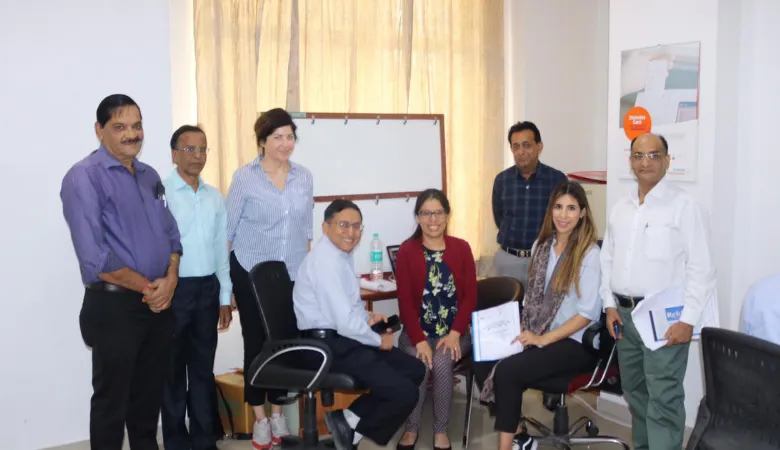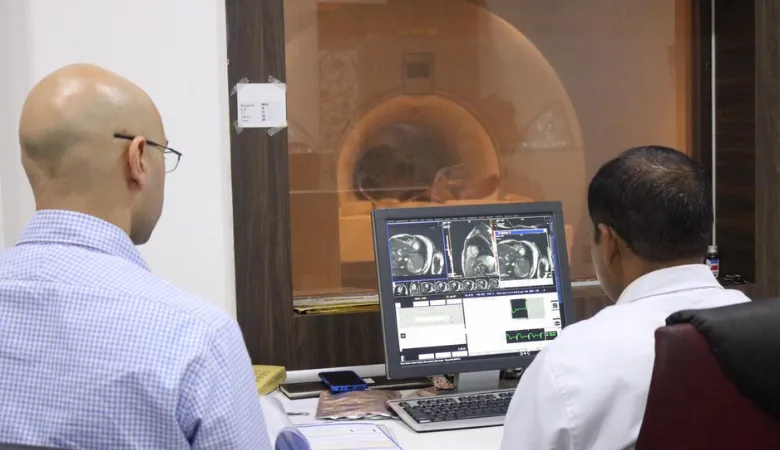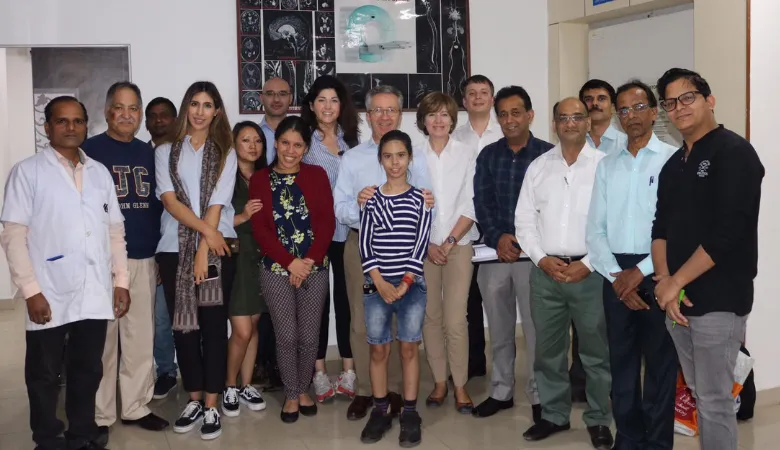24 January 2019
Optimizing MRI sequences for Thalassemia
Interview with Nabila Mughal, Cardiac MRI Superintendent

The cardiac team, which includes 9 radiographers, 11 consultants and 19 clinical research fellows, are the sole provider of cardiac services for the Guy’s and St Thomas’ NHS Foundation trust, conducting over 4300 clinical scans and around 6000 research scans each year.
Nabila Mughal was recently appointed as Cardiac MRI Superintendent. Before she joined our School she was involved in a collaborative project, led by Dr Malcolm Walker and funded via UCH Charitable Trustee Funds, which aimed to apply new methods of Thalassemia care to patients in India. We caught up with Nabila to find out more about her trip:
An international study into thalassemia management
Thalassemia major (TM) is an inherited blood disorder which affects the production of haemoglobin in the body. To manage TM, patients are required to have blood transfusions which are themselves a cause of iron overload in the body, including in both the heart and the liver.
Before 2000 it was difficult to know which TM patients had iron overload, particularly of the heart, and about 30% of young adults with TM were dying of heart failure. A combined research project between UCH (Dr Walker) and the Brompton Hospital (Prof Dudley Pennell) led to the development of an MRI method to measure iron content in tissue. This means that with regular high-quality blood transfusions there has been a huge improvement in clinical care and life expectancy.
However, treatment practices can vary greatly in other countries. If thalassemia is untreated or not managed well it can lead to growth restriction, hormonal imbalances, and eventually fatal if iron levels reach critical levels of build-up in the heart and liver.
We wanted to see if we could improve and standardise the management of this condition with the implementation of an ultrafast cardiac magnetic resonance (CMR) protocol in areas with very high numbers of thalassemia patients in India.

New MRI sequences to monitor patients
We managed to study 104 patients over two days in two cities. The MRI scans took an average of 8 minutes. This has important implications for TM patients in India and elsewhere. The cost of the scans has been reduced very significantly and with shorter times, more patients can have this important investigation.
Each patient underwent an ultrafast non-contrast CMR scanning focused on the assessment of cardiac structure, function, and the assessment of cardiac and liver iron levels. Scans were performed by the UK and Indian team together. Then, all scans were analysed with a post-processing software which provided immediate results of cardiac function and iron levels in less than 5 minutes. Finally all patients went into consultation with Dr Malcolm Walker to discuss their long-term medical history, how often they had been given blood transfusions and what kinds of medicine they were being prescribed. At these meetings I was also acting as a translator which meant I built up a rapport with the families quite quickly.

Effective management for chronic conditions
The study is still in progress and we hope to return in 12 to 18 months to repeat the study in these patients to establish if we have manged to improve their care and reduce complications through having detailed clinical information on their cardiac status and tissue iron loading.
Hopefully we can show there are really effective changes which can be made to improve TM care within existing infrastructures. It was a very rewarding study to be a part of and I really built a relationship with patients and families we worked with. I think it’s also really important to demonstrate how much impact the work of our NHS radiologists can make in other locations.
This project was funded UCLH and supported by the India Thalassemia Association
